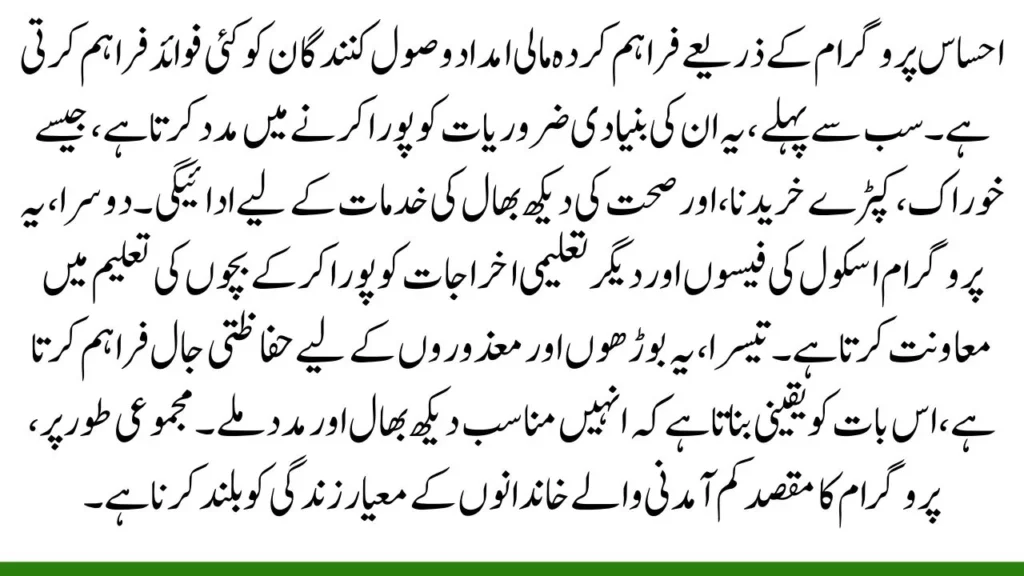The Ehsaas Program, a major initiative by the government of Pakistan, has distributed over 80 billion rupees to its beneficiaries. The goal of this program is to give low-income families nationwide financial support. This article will discuss the goals of the Ehsaas Program, how it benefits the recipients, and the overall impact of this significant distribution.
Contents
Purpose of the Ehsaas Program
The Ehsaas Program was established to support low-income families and individuals in Pakistan. The primary goal is to reduce poverty and provide financial aid to those in need. The program targets vulnerable groups, including women, children, and the elderly, to ensure they have access to basic necessities such as food, healthcare, and education. By offering financial assistance, the government aims to improve the quality of life for these individuals and help them become self-sufficient.
Distribution of Funds
The distribution of over 80 billion rupees through the Ehsaas Program is a substantial effort to support the needy. The funds are provided to eligible beneficiaries through various channels, including direct bank transfers, mobile wallets, and designated payment centers. This method ensures that the aid reaches the intended recipients promptly and securely. The government has set up a transparent system to monitor the distribution and prevent any misuse of funds.
Benefits to the Beneficiaries
The financial assistance provided by the Ehsaas Program offers several benefits to the recipients. First, it helps them meet their basic needs, such as buying food, clothing, and paying for healthcare services. Second, the program supports children’s education by covering school fees and other educational expenses. Third, it provides a safety net for the elderly and disabled, ensuring they receive proper care and support. Overall, the program aims to uplift the living standards of low-income families.
Eligibility Criteria
To qualify for the Ehsaas Program, individuals must meet certain eligibility criteria. They must be Pakistani citizens with a valid CNIC (Computerized National Identity Card). Their household income should be below the poverty line, as determined by the government’s poverty scorecard. Additionally, they should not own significant assets or property. Meeting these criteria is crucial for individuals to receive the financial aid provided by the program.

Impact on Poverty Reduction
- Significant impact on poverty reduction in Pakistan
- Provides financial aid to low-income families
- Reduces economic disparities
- Improves overall quality of life
- Enables beneficiaries to meet daily needs
- Supports children’s education
- Provides access to healthcare services
- Breaks the cycle of poverty
- Promotes economic stability in the country
Also Read: Verification of Special Persons for Himmat Card Begins in Punjab
Conclusion
The Ehsaas Program’s distribution of over 80 billion rupees is a crucial step towards supporting low-income families in Pakistan. By providing financial assistance, the program helps improve living standards and reduce poverty. The transparent and efficient distribution system ensures that the aid reaches the intended beneficiaries. This initiative is a significant effort by the government to promote economic stability and social welfare in the country.
